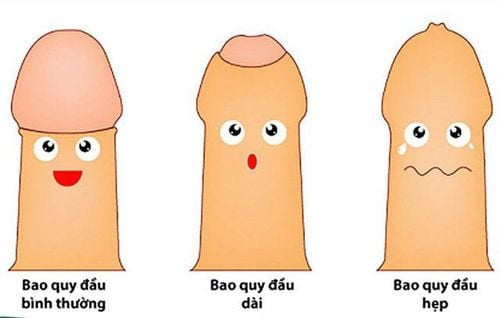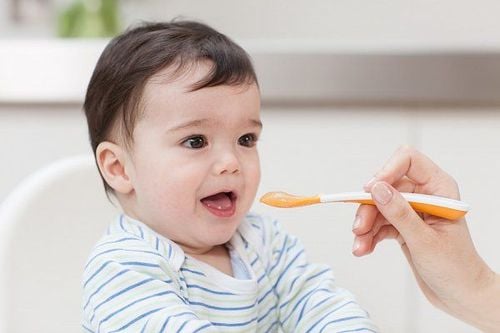This is an automatically translated article.
The article was professionally consulted by resident Doctor Duong Van Sy - Department of Pediatrics - Neonatology - Vinmec Hai Phong International General Hospital. Doctor has 09 years of experience in the field of Pediatrics.For younger children, there are stages of learning to draw and write that you can see as your child grows, from 1 to 3 years old. By providing repetitive enjoyable experiences with a variety of art and writing materials, you'll see your child's progress over time.
1. Your child's way of writing and drawing changes over time
Creativity is the bridge to learning. When children are curious and creative, they can come up with answers to their problems. For example, how to keep the tower block from falling. Creativity helps children become curious and confident when starting school later.One of the most important ways for children to regulate their creativity is to experiment with art materials. As your child picks up his crayons and starts working, you'll see his art and writing change and become more controlled and complex as he gets older.
For young children, the art and early writing skills are one and the same. At first, it was all about figuring out what this crayon could do. Children then discover a connection between the hand holding the crayon and the words they draw on the page. Imagine how much fun this must be for your baby!
Now your baby can make a real “mark”. This leap in thinking skills is helped by your baby's newfound ability to grasp objects with their hands and fingers. The child's increasing control over the muscles of his hand allows him to move his pencil or paintbrush with purpose and purpose in his head.
For young children, there are stages of drawing and writing that you can see as your child develops from 1 year to 3 years old. Note that the timetables listed below are approximate; Children can master these skills more quickly or more slowly and still develop well.
Development doesn't happen at the same pace for every child, but by providing repetitive enjoyable experiences with a variety of art and writing materials, you'll see progress along the way. time.
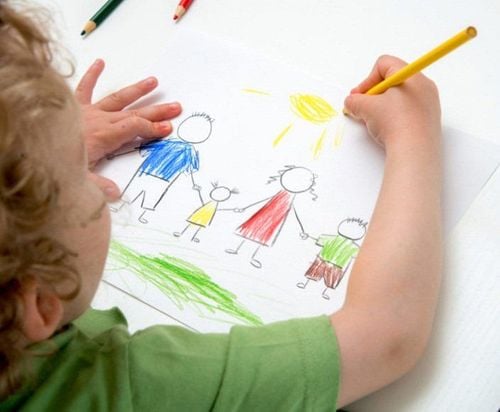
Đối với trẻ nhỏ, có các giai đoạn học vẽ và viết mà bạn có thể thấy khi con bạn lớn lên, từ 1 cho đến 3 tuổi
2. Stages of children learning to write and draw
A child's initial writing efforts will certainly not look like words and sentences, but their scribbles, lines, and drawings all get them ready to learn the ABCs, and maybe one day will. A wonderful novel was born.Many children can grasp a crayon and move it around on a piece of paper when they are about 12 or 13 months old. Their writing and drawing skills improve in small increments throughout the toddler years until they can draw recognizable pictures and eventually write a few letters down on paper.
2.1. Children 12 to 18 months During the last few months of the first year, children's fine motor skills gradually improve and stabilize. Now your baby is physically ready to hold a crayon and start learning what they can do with it.
By the age of 12 or 13 months, some toddlers are already able to scribble vigorously, while others start to hesitate. Children will drag crayons around on the paper, scribbling inadvertently.
If your baby takes longer for this, that's also normal. Because children develop at different rates, some faster than others. By around 16 months, your baby will likely be an expert at doodling, creating gallery-worthy drawings for your home.
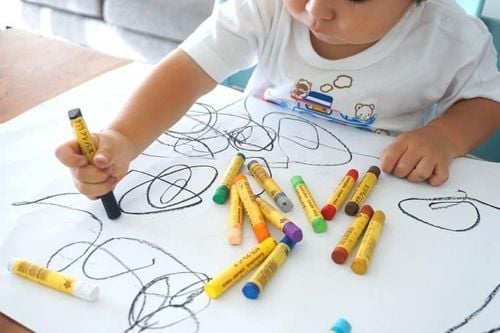
Đến khoảng 16 tháng tuổi, con của bạn có thể sẽ là một chuyên gia viết nguệch ngoạc
But children easily become interested by anything they can draw from crayons, pens to crayons. You should pay attention to the child, because at this stage the child can draw on the wall..
You can draw a single line and the baby can easily imitate it, although the line is not perfect.
2.3. Children 26 to 30 months At around 29 or 30 months, babies will move from doodles to true art. Children begin to take more interest in coloring and drawing, they begin to add colors and try to represent real objects and things they see.
Children can also begin to try to incorporate language into their drawings.
Take a close look at a picture and you can see that the doodles are bigger than the drawings. Children can also start writing in their pictures, although the letters won't look like any other alphabet you've ever seen.
2.4. Children 31 to 36 months By age 2 and a half, your child should be able to hold a thick pencil or crayon in a writing position. According to Nina Lief, child development expert and co-author of The First Three Years of Life, children this age can often master the up and down motion needed to form the letter "V," which is more difficult than a bit and requires more dexterity than making a straight line.
Between now and their third birthday, children will also begin to make circular strokes and some will be able to write a few letters - or zigzags that look a lot like letters. A small number of children will start writing their name or some of the letters in it around this time or just past their third birthday. However, there are many kids who don't, and that's okay, you don't need to worry about it.
Here are some activities to increase your child's fine motor skills and dexterity:
Use a pin or clothespin to pick up cotton balls. Grasp, squeeze, smash, and roll clay or toys. Use your fingers to draw shapes and letters with nail polish or shaving cream. 2.5. What will happen next? As children reach preschool age, children become more proficient in the use of crayons and pencils, and they begin to draw more precise and complex drawings. Most young children will be able to write their own names before they enter kindergarten, especially if they learned the alphabet in daycare or preschool.
Before the age of 5, children will learn to create horizontal lines, copy circles and squares, and draw people. Maybe he'll start with sticks and add curves as he gets better.
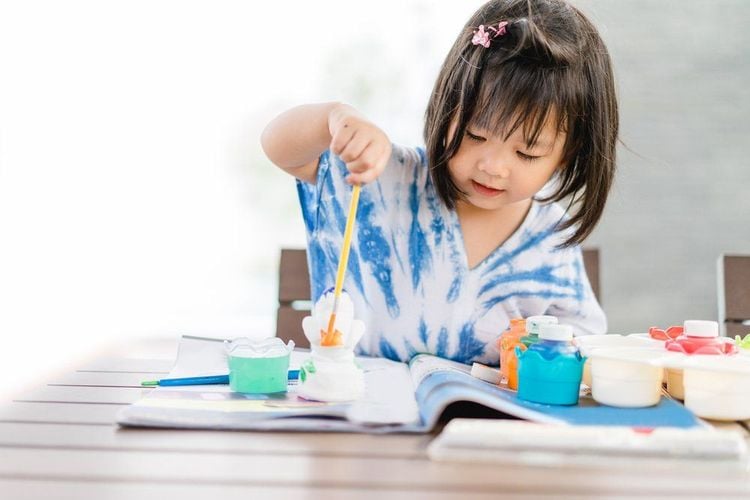
Khi trẻ đến tuổi đi mẫu giáo, trẻ trở nên thành thạo hơn trong việc sử dụng bút màu và bút chì, chúng sẽ bắt đầu vẽ những bức vẽ chính xác và phức tạp hơn
3. When to pay attention to children's ability to practice writing and drawing
Every child's development is different, but if your child hasn't started to scribble by about 15 or 16 months, talk to your doctor at your next visit. It's also important to remember that premature babies may reach this and other milestones later than their full-term counterparts.4. What can you do to encourage your child's writing and drawing skills?
4.1. Make art a regular part of your child's playtime Give your child hard, easy-to-grip crayons, thick pencils and washable markers, and drawing paper. You can help your child keep the paper in place by taping the paper to the table so it won't move as they draw.As kids get older, you can let them use washable paint, child-safe scissors and glue, and homemade salt dough as part of your child's creative time. Have your child wear an old shirt of yours (sleeves removed) as an outerwear and spread newspaper on the table to keep it clean.
4.2. No instruction needed Let your child experiment and explore. Creativity means having the power to express yourself in your own way. This independence is exactly what a growing child is looking for to feel more confident, competent, and intelligent.
By sitting nearby, observing and enjoying their creativity, you are giving them the guidance they need.
4.3. Notice the process, not just the product. As parents, we often praise our children for their successes: What's the picture? And sometimes we pretend to realize that plants should be green and not purple through children's drawings. Sometimes we can quiz the child and ask what colors these are?
But actually children learn more when we focus not so much on what they are drawing, but on what they are thinking about their drawing.
Take a moment to observe your child's work: Looking at what you are doing, there can be a lot of your activity in your child's work! Or, That painting is really interesting. Those colors make parents feel happy. Or, we see you are working very hard on your drawings. Or you can just say: Tell me about your picture. Then see if the children are interested in sharing more about their work.
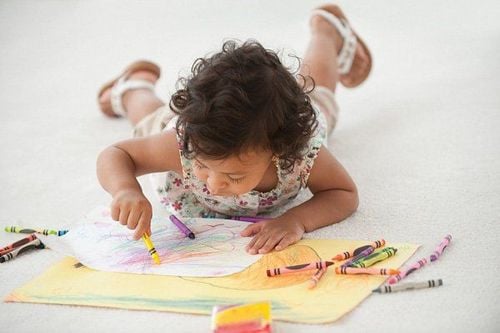
Bạn hãy dành một chút thời gian để quan sát tác phẩm của trẻ
4.5. Using art to help your child express strong emotions Child having a tantrum? Give your child some play dough or put a pen and paper and ask him or her to draw a picture of anger. Creative activities can sometimes help children express and understand emotions that are too intense for them to put into words.
4.6. Encourage your child's writing efforts If your child scribbles something and then tells you what he "wrote," take it seriously. Let your child bring his or her “shopping list” to the supermarket or send a (scribbled) letter to grandma. This is how children learn how words have power and meaning.
4.7. Showcase your child's art and writing Display your child's art and handwriting in your living room, child's room, or elsewhere in your home. This is a way to help children know that their work is appreciated and important.
Creative activities help children learn to solve problems, come up with their own answers, discover the causes and effects of their actions and feel confident about their choices.
Art experiences help children develop independence within limits, and give them the opportunity to express their ideas on paper or other materials. Most importantly, creative expression allows the child's rich imagination to be exploited.
Follow the website: Vinmec.com regularly to receive many useful tips on child care!
Articles refer to sources: babycenter.com, healthychildren.org, healthychildren.org, zerotothree.org





